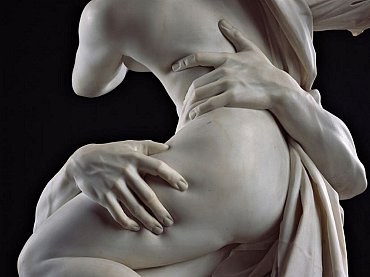Accademia Gallery Must-sees

The Accademia Gallery in Florence is so full of extraordinary works of art that it's high the risk of losing something. You cannot arrive unprepared at the entrance, so here there's a nice list with all the things you have to see in each hall... in order to avoid passing in front of an incredible work of art without even realizing it!
The Accademia Gallery is accessed from Via Ricasoli, usually not without having waited a bit in line. The length of the queue varies however much according to the season and it can be really long in high season, anyway it definitely worth to wait a while to enter the sacred temple of Renaissance art.
As you enter you are in the Hall of the Colossus, so called because in the XIX century there was a massive plaster work of one of the Dioscuri made by Montecavallo. Now in its place, there’s the group of the Rape of the Sabine in plaster executed by Giambologna, whose version made with Carrara marble is located under the Loggia dei Lanzi in Piazza della Signoria. In the same hall you can admire the painting by Paolo Uccello that depicts scenes of monastic life and the work "Saint Stephen with Saints Jacopo and Pietro" created by Ghirlandaio. Then watch the "Madonna and Child, St. John and Two Angels" made in 1468 by Sandro Botticelli in which one of the two angels in the background looks at the visitor directly involving him in the scene.
After the Hall of the Colossus you will get to the Florentine Halls, really a fascinating area, full of admirable paintings. Among the works to be noted is the fresco of Christ in Pietà by Andrea del Sarto, who was in the monastery of Santissima Annunziata. It is then impossible not to notice the imposing Deposition initiated by Filippino Lippi and finished, after his death, by Pietro Perugino. Finally dwell on the work "Venus and Cupid" by Jacopo Pontormo on a drawing by Michelangelo Buonarroti.
From the Florentine Halls go on through the Prisons Gallery where there are four sculptures by Michelangelo called, precisely, "Prisoners" that the artist had started for the monumental tomb of Pope Julius II but which, for a number of circumstances, had never terminated. Alongside the Prisons there is a statue of St. Matthew begun by Michelangelo in 1505 and never completed. Do not get caught by the desire to see the David and linger admiring the Palestrina Pietà, one of the four Pieta carved by Michelangelo in the course of his life.
Finally here you are, in the presence of David, the most famous statue by Michelangelo representing the young man in the moment before hurling a stone at Goliath. Normally the statue is surrounded by dozens of people, but with a little patience, you will have the possibility to see it well from every angle.
The tour ends here, with the certainty you didn't lost at least the most significant works, but of course those housed in the museum are many more.











